Comics as paperbacks are always an interesting market to watch. Recently Mike Baron Kickstarted a Nexus novel. Even more recent, Ric Meyer wrote a prose version of the 70s tough guy Targitt from Atlas Comics. There is a lot of noteworthy items to unpack there.
In the ’70s, Atlas Comics (then known as Atlas/Seaboard) launched under former Marvel owner Martin Goodman. Big-name creators presented an unusual cast of characters in equally interesting titles. One of Atlas’ standout points as a company would have to be creator rights. An early (mid-70s) adaptor of creator rights that arguably helped our industry to get to the point is it at today. Through a series of mishaps and miscalculations, the company folded. Like Charlton, Fawcett, Mighty Comics, Skywald, and other companies that have closed their doors, Atlas left behind fond memory and fans that remain even to this day.
Good creations refuse to die! Charlton, Fawcett, Mighty Comics, and others have continued through different means since their initial passing. Atlas even relaunched under the Ardenn banner. This time with Goodman grandson, Jason Goodman, behind the steering wheel. That, too, came to pass leaving fans wanting more.
Rumors started to rise about the Atlas name at Dynamite and hopes were diminished when nothing “really” came to pass from that. It felt like an old 40’s movie of an isolated scene of a lonely kid kicking a can down the street. Suddenly, more news came. Movies! TV shows. The rights to the Atlas properties for movies and TV shows. The excitement returned! Back issue prices rose. Atlas was back! Then the pandemic hit and as we all know, everything came to a halt. The news was little to none.
Then a lone post on an Atlas Facebook fan site by a “John Targitt” brought to light an Atlas Original prose paperback book and ebook of John Targitt by Ric Meyers,
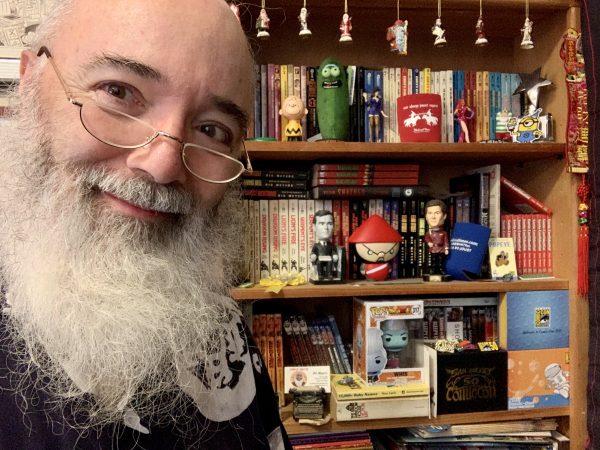
Atlas originally published Targitt in 1975. 1975 was a long time away and today we find its creator, Ric Meyer, returning to the writing the story of John Targitt. This time, instead of a comic, Targitt returned as a prose novel.
Ric is a veteran of comics and much much more. Today is the day you find out more about Ric Meyers, Atlas Comics, Targitt, kung fu action, The Destroyer, Medieval Times, and a lot more. As much as there is to unpack about Atlas Comics, there is much more about the creativity of Ric Meyers!
TARGITT
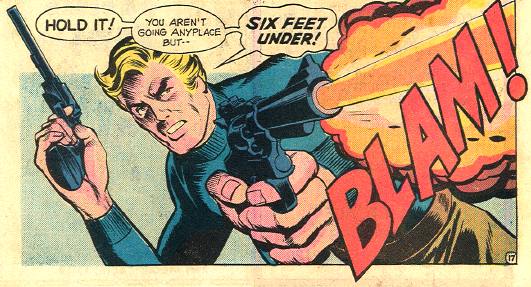
Q: You wrote the Targitt…Man-Stalker comic series. Decades later finds you writing the prose edition. That’s awesome. How did Targitt find its way back to you?
A: The same way Targitt originally found its way to me. Through Jeff Rovin. I was sitting at home, minding my own isolated business, when he asked if I’d like to write a novel version of the first Targitt comic (before he became Man-Stalker). And, as I remember, I started giggling with delight. Having written the 1979 Incredible Hulk novel, Cry of the Beast, for Marvel and Pocket Books (finishing the manuscript the day I left to visit the Pinewood Studios set of Superman for Starlog magazine), I had always wanted to do the same thing for my co-creation, Targitt. I couldn’t’ve been happier.
Q: What is your description of Targitt to someone new to your character?
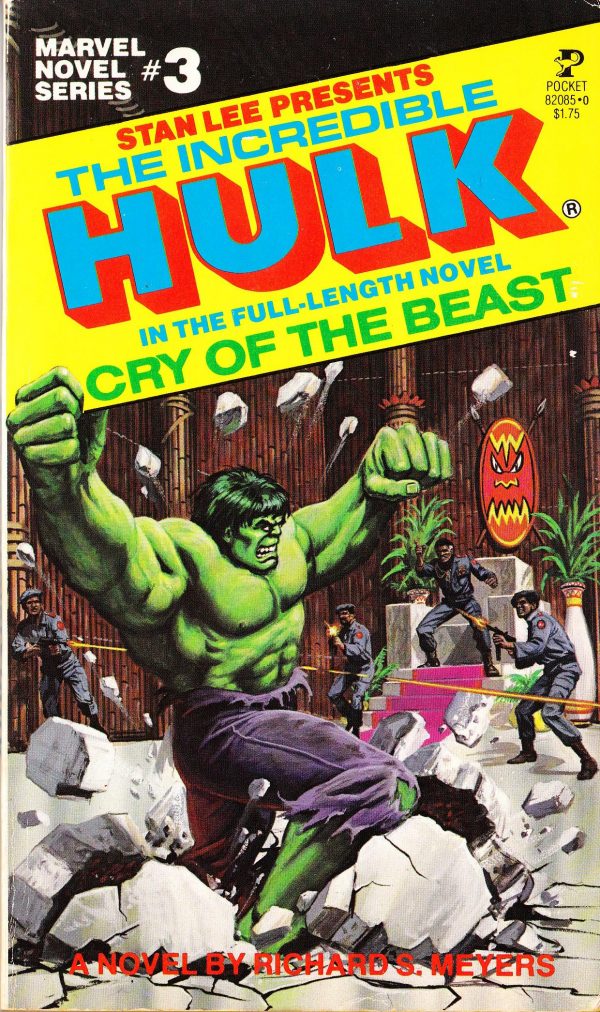
A: He’s my homage to all the clean-cut, handsome, action heroes of the 1960’s and early 70’s that I had come to love and depend on. Guys like James Bond, Derek Flint, Dirty Harry Callahan, Peter Graves’ Mr. Phelps on Mission: Impossible, Jack Lord’s Steve McGarrett on Hawaii Five-O, James Franciscus — a Targitt lookalike — as Longstreet, and then there was the name-alike Bullitt, starring the king of movie cool Steve McQueen. Unlike many of my future book characters, Targitt was everything I wasn’t.
Q: For those who read the original three Atlas comics, explain how this book coincides with the comics.
A: No, I’m going to let you, and all the readers, do that. Targitt the comic book was my first professional writing job. Targitt the novel is my 76th published book, as well as the fruition of some of the dreams I had at the end of the original Atlas, and the hopes I had for Targitt issues 5 to infinity, which were not to be. At the same time, I had learned that every novel should be able to stand on its own, in case I didn’t get to write a sequel. So I put as much into this Targitt novel as I could without making it too bottom heavy.
Q: With the novel, you’re able to tell a more detailed account of Targitt as a person and add more to his story. How much of this story did you already have in mind before writing the prose version?
A: In general, pretty much all of it. The original comic had the bare bones of the story, but the transitions were spotty to say the least. I just had to fill in the cracks in a logical way. In construction terms, I had been building the Targitt house in my mind for decades, so when Jeff gave me the go-ahead, I went to town on it.
Q: Comics are a serialized medium. As an author of several ghostwritten Destroyer novels, you are intimately aware of how paperbacks can be serialized as well! Will we see more Targitt novels in the future?
A: That’s not up to me. But I sure hope so!
Q: In both the comic and the prose book, you present the thugs, agents, and other sorted bad guys as a kind of wanted list. Each with a personality, specialty, nickname, and list of crimes committed. Almost as if, instead of having a tailor-made rogues gallery, every criminal Targitt comes across is his in rogues. Without thinking about it, who are some of Targitt’s memorable enemies?
A: Well now, I didn’t really want to go far afield from the original story. I just wanted to flesh it out and have it continue the way I had wanted it to in 1974. So any of the old comic and the new novel’s readers will recognize some folk in there … maybe not by their comic book names, but certainly by their comic book infamy.
Q: Was a fourth issue of the Targitt / Man-Stalker comic ever plotted or written for Targitt or was Atlas’ future already on the wall?
A: Well, keep in mind that was more than 45 years ago, and now my most personal superhero is Captain Shortermemory. I seem to remember that I, and probably others, had a plot in mind, but I can find no notes in my personal files.
Q: Whose decision was it to change Targitt in the comics to Man-Stalker? While super heroish, you went for a costume of utility and function as opposed to flash and appearance. A smart plot point for a hero like Targitt. Which came first the utility of the costume or the superhero push of the title?
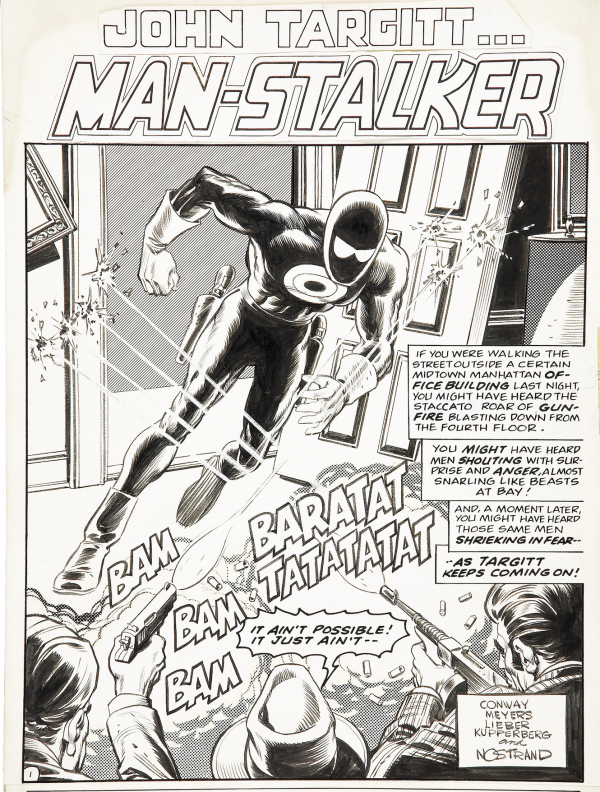
A: Darned if I know. Pretty sure it wasn’t me. But one nice thing about being assistant editor, I was never on the front line. I sat in the corner of Jeff’s office and did everything I was told, and everything I thought Jeff was too busy to do. That, by the way, was how I got the job. I visited the Atlas offices and waited hours to see Jeff, hearing through the door all the stuff he had to take care of. When he finally appeared at the end of the work day, apologizing that he kept me waiting, I told him that he should have a peon to take care of all the grunt work. Much to my surprise and delight, a month later he made me that peon.
Q: Targitt opens up exactly as the comic did. But there are changes! In the prose book, there is a larger cast of characters. Some of the new faces include Hunch. Tell us about Hunch and some of these other new characters.
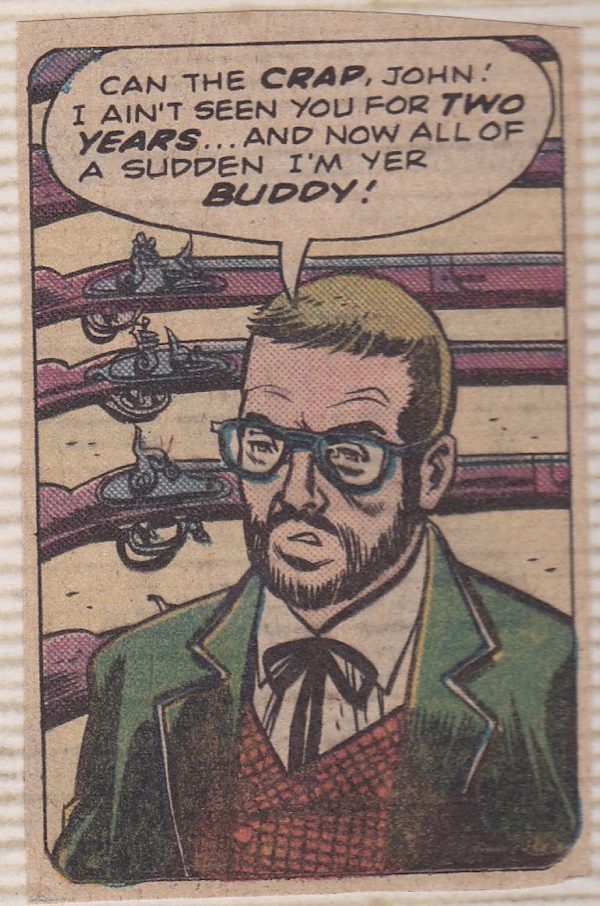
A: Hunch was in issue two — the first Man-Stalker comic. He’s Targitt’s grouchy friend and armorer and bears a striking resemblance to a certain assistant editor. Howard Nostrand, the Targitt artist, drew him as if Hunch was being played by me. As for other new characters, I treated the story like a casting director and production designer. The original comic was 20 pages. The novel is 180 pages. Although I kept the plot skeleton the same, I had to add a lot of muscle and flesh. Most of the characters are in the comic, but now they have complete names and histories.
Q: Without revealing who the masked hero that appears is (let that be a surprise to readers)…how long have you had the masked hero and Targitt friend, Hunch, in your thoughts?
A: Both were there at the beginning, which is why I was thrilled to be able to make them appear as I had always wanted them to.
Q: Will the heroes and or villains of Targitt’s comic or prose interact with other Atlas characters in the future?
A: Again, not my call or decision, but I would love them too, and already am thinking about how best to do that if given the chance … hopefully not having to wait another 45 years to do it!
ATLAS COMICS
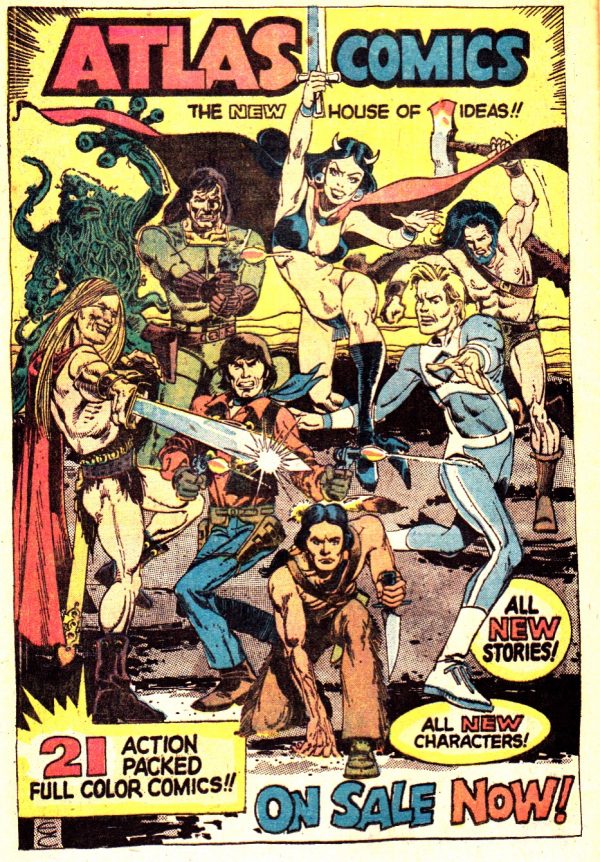
Q: You were not just a writer of Targitt at Atlas. You were an assistant editor. Your ideas about titles, comics, and other things were listened to by Jeff Rovin. This, in part, helped create the start of Atlas. What were some of those ideas?
A: Once I was hired, I just got to admire the work of editors, artists, and writers far more experienced and established than I was. But I had been writing and drawing some crude comics of my own since junior high — basically twenty-page fight scenes in the spirit of Jack Kirby. I think I showed Jeff some of those as well as a list of ideas. The one I clearly recall is a Spider-Man variant I called The Roach. You just couldn’t kill the fast-moving guy no matter how hard you stepped on him. After that, however, I just strove to be the best assistant editor-slash-peon possible.
Q: When the 70’s Atlas came to a close, what titles or characters did you think were missed opportunities?
A: That’s easy. All of them.
Q: Now, with decades behind that period of time, what characters do you think could become opportunities for Atlas’ future plans?
A: That’s easy. All of them.
 Q: Atlas was in reality, very untraditional in its output during the Targitt comic year. People criticize Atlas are quick to point out similarities from to character to the next. That is, after all, an easy game to play. You can point out hundreds of characters that like-minded in comics. Most modern heroes are like-minded to many heroes from the golden age of comics. Most Marvel and DC characters are built on the back of other creations. Two Marvel Characters, Chaykin’s Dominic Fortune and David Anthony Krafts were built on those very creators’ efforts at Atlas. It is what the creators do with the characters that matter the most. Given that similarities are a matter of opinion, the mindset at Atlas was different and the talent was stellar. Given time, I think Atlas could have challenged Marvel and DC. At the very least be in the position in its own way that we see Image in. This is coming from me, an outsider, but also a fan. You’re an insider who actually was then and is now, part of the company. What are your thoughts on this?
Q: Atlas was in reality, very untraditional in its output during the Targitt comic year. People criticize Atlas are quick to point out similarities from to character to the next. That is, after all, an easy game to play. You can point out hundreds of characters that like-minded in comics. Most modern heroes are like-minded to many heroes from the golden age of comics. Most Marvel and DC characters are built on the back of other creations. Two Marvel Characters, Chaykin’s Dominic Fortune and David Anthony Krafts were built on those very creators’ efforts at Atlas. It is what the creators do with the characters that matter the most. Given that similarities are a matter of opinion, the mindset at Atlas was different and the talent was stellar. Given time, I think Atlas could have challenged Marvel and DC. At the very least be in the position in its own way that we see Image in. This is coming from me, an outsider, but also a fan. You’re an insider who actually was then and is now, part of the company. What are your thoughts on this?
A: My time at Atlas set the stage for my entire career, and, although it didn’t turn out the way I wanted it then, it was still a spectacular experience I wouldn’t have traded. As assistant editor, I got to do so many cool things. I got to do pick-ups and drop-offs at Neal Adams’ studio, as well as The Studio, where Mike Kaluta, Bernie Wrightson, Barry Windsor-Smith and Jeff Jones shared an art space. Whenever Jeff (Jones) finished a painting for one of our covers it was always wrapped in brown paper, so it was like all our birthdays and Christmas put together when Jeff (Rovin) tore the paper off and we all oohed, aahed, and gasped at the invariably stunning work of art. I still have many friends from those years, who have made my life better. But, as also a writer of fantasy and science fiction (in addition to many other genres), I try not to play “what-if” games … unless I’m being paid for it.
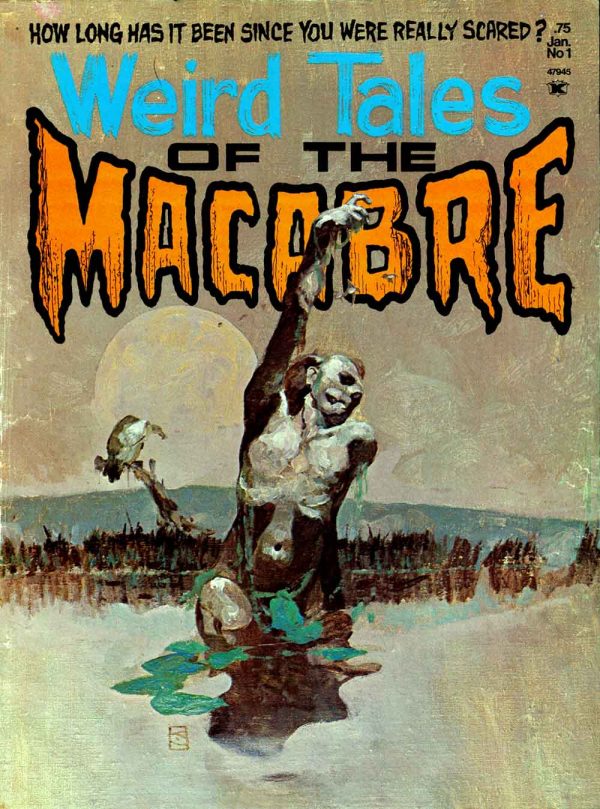
Q: Marvel and DC have altered Hollywood movies in many ways. Atlas changed comics with their early efforts in creator rights and through their creations that are loved by many. The new Atlas has the possibility to do the same to paperbacks. As a prose writer, what do you think Atlas can do to make the paperback industry better?
A: Again, not my call. I’m just the/a writer. I did every one of my previous 75 books as best I could, given the circumstances. What happens after it leaves my hands is not in my control. If I were a publisher or bookseller that might be different, but I’m not.
Q: Likewise, Seaboard Monster Club is another division of Atlas. Treating fans to the behind-the-scenes and extras of our favorite Atlas comics. This is very exciting. Will anything related to Targitt participate in this?
A: I hope so. That would be super cool.
Q: The comic industry is at a crossroads and to where it might go, no one knows. I believe the industry will find a way. Atlas Comics for their 2020 incarnation as prose paperbacks is an interesting step for a company to take with comic book properties. With many attempts to trying to widen the comic book market place, I’m looking forward to seeing how it turns out. As both a comic book and paperback writer what are your thoughts on a prose rebirth?
A: I don’t consider it a rebirth. Prose has been around for centuries. It will most likely be around for centuries more (if humans are around for centuries more). I like telling stories no matter what the medium. That’s why I’ve worked in every entertainment form I can. You can find me in books, mags, radio, TV, movies, DVDs, and podcasts. And I’m still trying to create a true kung fu videogame.
DESTROYER
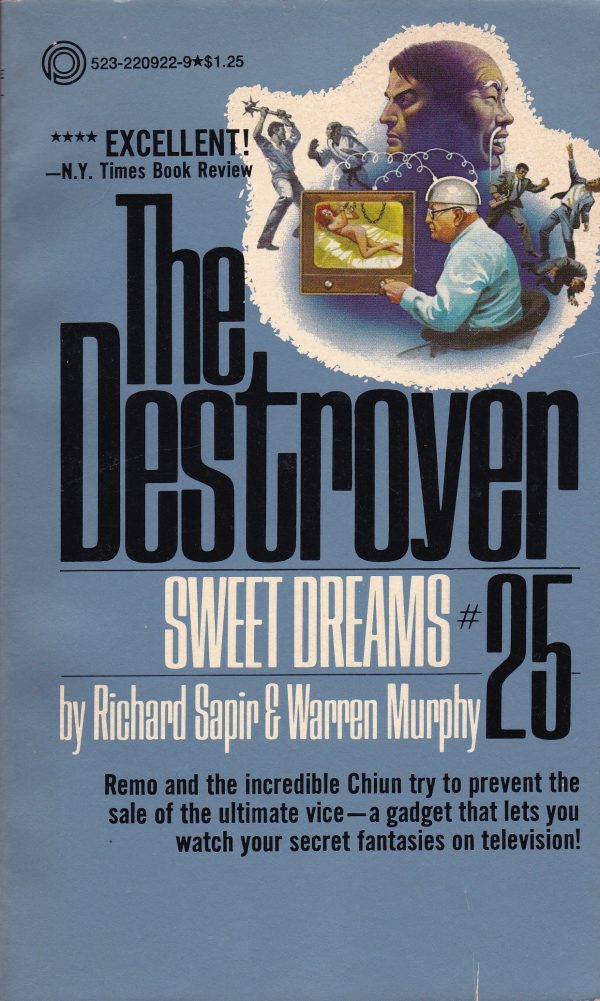

Q: You ghosted for Warren Murphy’s Destroyer paperback series. Some readers might recognize Destroyer by his name, often used for TV and movie, Remo Williams. That’s an interesting credit! Is there an interesting story behind becoming a writer of Remo?
A: Well, there’s a story, but you have to decide if it’s interesting. After I left Atlas, my father told me about a want ad in a local Connecticut newspaper that read, and I quote, “Ghostwriter wanted. No glory, lots of money.” Amused by the wording, I answered the ad and was delighted to be invited to visit the home of Warren Murphy, the co-creator and co-writer of The Destroyer book series, which was then the second-largest selling paperback book series in the country (following Mack Bolan the Executioner, who I think The Punisher was ripped off from).
By then the Destroyer series was up to number twenty, and I was already a fan and had read all of them. And when I met Warren I promptly told him what I thought was wrong with number twenty, Assassins Play-Off. I have to guess that he might have agreed with me, because shortly thereafter he asked me to write three Destroyer books. I asked him if my writing samples had sold him on me. He replied, and again I quote, “No, your writing sample stunk. But your cover letter was one of the best I’ve ever read.”
Q: How does one even know that a book is looking for ghostwriters? Some, are holding the tradition, often found in pulps, where others are quite surprising to discover the use of a ghostwriter.
A: I’m far from an expert on the subject. I have more experience as what is known as a “house writer.” Those are authors hired by a publisher to be one of a team cranking out paperbacks of the publisher’s creation, all under the same pseudonym. That was what I did on Dirty Harry (by “Dane Hartman”), the Ninja Master (by “Wade Barker”), and a World War II action series called Mac Wingate (by “Bryan Swift”). In all these cases after Remo, I became aware of the jobs through literary agents, and I wrote about half the published series, except for the Ninja Master, where I wrote twelve of the sixteen in the series (and was officially given the Wade Barker pseudonym as my own).
Q: For readers of Destroyer, why should they check out Targitt? How is Targitt different from Remo? How is it alike?
A: Because I wrote both, and I always try to entertain myself while writing, in the hope the reader, too, will be entertained. Targitt is more serious than Remo, having been born of personal tragedy. Remo is what they used to call a “wiseacre.” Targitt was created as an homage. Remo was created as a satire.
Q: When you were writing Destroyer, it was a different time. Not only for Remo and the time the stories took place in but also for you personally and the publishing industry at large. Jumping to the present day, we live in a dramatically different world. Politics have changed. How people relate to federal policing organizations and the military has changed. Just as reactions to violence in the real world to how people react to violence on the news or shown in fiction. These changes do not affect stories in the past. At least in how they’re told. Your Destroyer stories were created in the past as much as the original Targitt stories were. Do you think they reflect on how people read and relate to those stories from the past? Such as Destroyer or the Targitt comic? Did these changes affect how you wrote the Targitt book?
A: Well, this new Targitt book takes place in 1974, so John, Hunch, and the gang are in the 1974 mindset. Even so, I challenge your precept that we live in a dramatically different world. I think it just seems that way because social media is so pervasive and intrusive. We now know what’s going on so much more than when there were only three TV channels and newspapers. Two of my favorite sayings are “history repeats itself,” and “those who do not learn from history are doomed to repeat it.” Right now, we seem to be repeating the 1918 flu pandemic as well as the 1968 anti-war protests. As a fan and researcher of history I always challenge writers to study any fifty years of any country in the world. They will inevitably recognize everything that goes on. Technology changes, people don’t. Humans have always acted like humans, and I imagine humans always will.
Q: A lot of guys I knew dated strippers. A common comment I heard them say would be “they (the “girlfriend”) comes home to be with me at the end of the day. As a ghostwriter, when you write a book under another person’s name, at the end of the day, does it feel like the book comes home to you? Or to the writer you’re ghosting for?
A: Every ghost or house writing job I’ve had came with marching orders. I saw my job as fulfilling the wishes and desires of whoever hired me — be it the writer, agent, editor, or publisher. At the beginning of my career, I used to take writing classes or joined writing groups, but basically flunked out because I thought the teacher and fellow writers really didn’t want me to succeed. They wanted to succeed. So I decided from then on that I would only try to please the person who could publish or pay me.
ADAPTATIONS
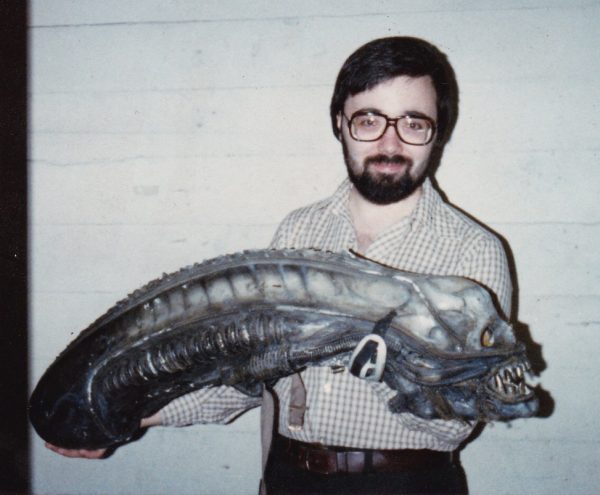
Q: You have done the movie tie-ins for Moonraker and Alien as well as others. Aside from your own self inflicted pressures of doing an adaptation right, what other pressures does one feel writing these kinds of stories? How was writing a Dirty Harry novel?
A: Well, I better qualify that the Moonraker and Alien tie-ins were magazines celebrating those movies. I’ve never actually done a novelization of a movie or TV show. I’ve either done completely original novels about a movie character, like Dirty Harry, or non-fiction books about a genre I loved, like TV Detectives, exploitation films, or martial art movies.
I usually don’t put pressure on myself, because I love what I’m doing. I remember being flattered when asked to write new Dirty Harry books, and whatever pressure there might have been disappeared when I saw that in the first Dirty Harry novel not written by me, they spelled his name wrong!
I marched into the editor’s office and demanded to be given all the Dirty Harry movie scripts and to be set up in a Warner Brothers screening room to see the three movies thus far in the series. I took notes from both and created a Dirty Harry “series bible,” for any house writer from then on, so that sort of bone-headed move wouldn’t happen again.
Q: Unless a movie was adapted for a movie or TV show, I never read a tie in or adaptation before the movie. I’m curious, does that happen? Has your work turned on a reader to go see the movie?
A: Sort of. Like I said, I’ve never actually written a novelization, but I’ve been told by fans of my Ninja Master books that it got them to watch the really good Japanese ninja movies (like the Shinobi No Mono series), not the crappy Cannon Films knock-offs.
Q: What kind of input do you get when writing Moonraker or Alien? What kind of editorial things occurs with these kinds of books?
A: Again, since these were magazines, all I had to do was celebrate them, which I was more than happy to do since I love James Bond and great science fiction films. To be able to visit the sets and interview so many of the cast and crew was thrilling to me. Still is.
MAGAZINES
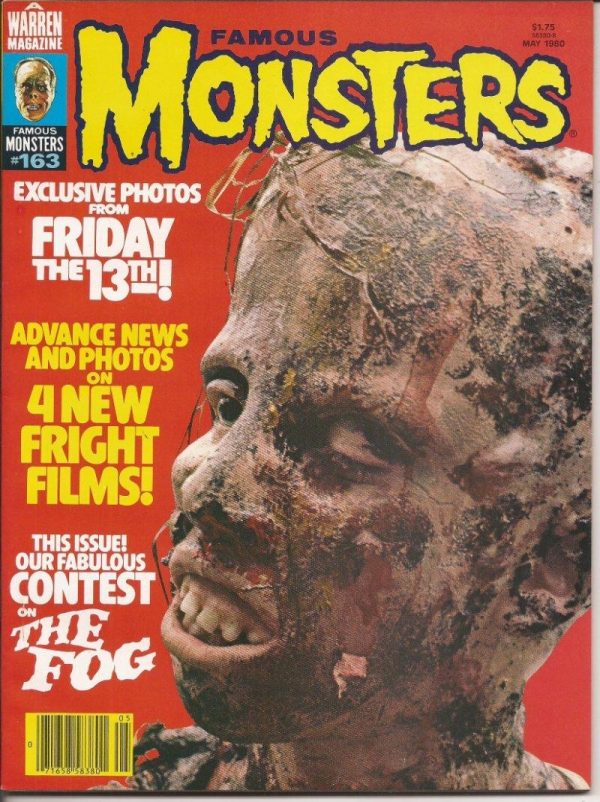
Q: You have been involved with Fangoria, Starlog, Famous Monsters of Filmland, and other magazines. All rank very high in pop culture and movie buffs. Marvel always promoted their bullpen. I’m sure there had to be some great moments working for any of those magazines. What are some of the memorable moments?
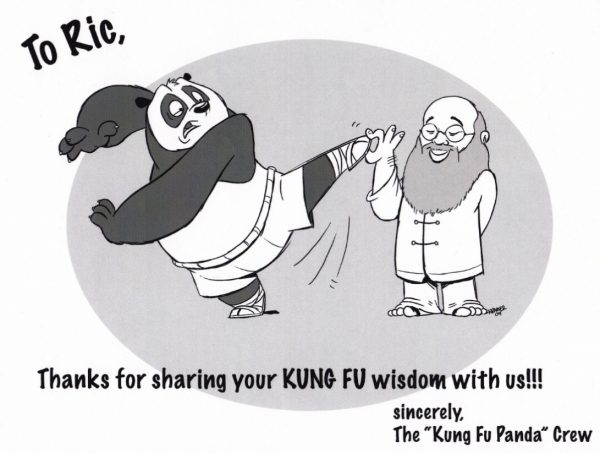
A: Basically I’ve found my career has been made by whatever I love. I loved Star Wars, then saw the Star Wars issue of Starlog on the newsstand. Seeing that the address of the magazine company was in New York City, I visited unannounced, gave them copies of my books and said I’d like to work for them. The publisher gave me a test: write an obituary for Wernher von Braun, the pioneer of space rocket technology. I handed it in the next day and received one of the greatest compliments in my writing career: “You brought him back to life.” Then they made me assistant editor.
I always look for ways to make my passions pay. Love TV detective shows, so wrote award-winning books about them, then became the entertainment editor of The Armchair Detective magazine. Love pinball and videogames, so Jeff brought me on to Videogaming Illustrated magazine. Love animation, so became New York commercial animation editor of Millimeter magazine — then eventually creative consultant for Hanna Barbera, DreamWorks, Nickelodeon, Disney, and Illumination animation studios. Love martial art movies, so wrote four books about that, became entertainment editor of Inside Kung Fu magazine, and started my San Diego Comic-Con Kung Fu Extravaganza. And so on.
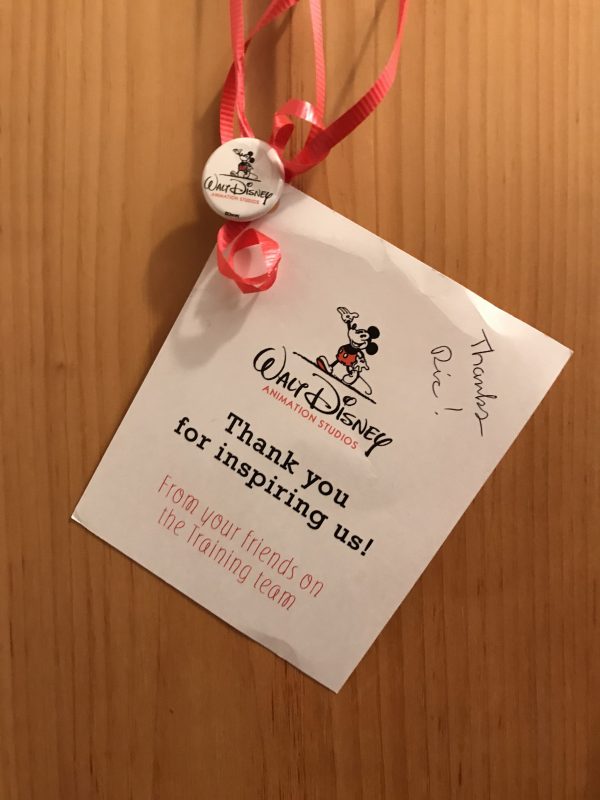
Do what you love and love to do it as well as you can. I’ve found that one thing leads to another. Invariably I got work on TV and in movies because a producer read and liked one of my books, or enjoyed the interview I did with them for one of the many magazines I worked for. That’s how I got to contribute to Columbo and became Special Media Consultant (a title created for me by Harlan Ellison) on the 1980s CBS reboot of The Twilight Zone.
And I usually got the magazine job because my previous books showed the editor that I could actually start and finish something publishable. I was very lucky to establish my career in the 70s and 80s. It’s not the same in our 2020 web world, with so many voices and so few fact-checkers.
MEDIEVAL TIMES
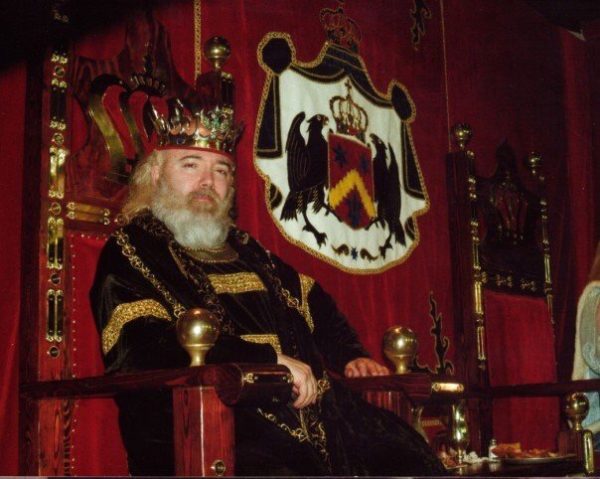
Q: As a teen, I visited the Kissimmee Florida Medieval Times and was very impressed. I still have the photo and paper crown from that night. I think the teen me would be surprised that my future me would interview a king of that great jousting entertainment and eating establishment. Yet here I am doing exactly that with this very interview. For those who don’t know medieval Times. What is it? How did you discover it? How did you become the King? Tell us about being a king!
A: In the 1990s I wrote a trilogy of Horror Action (H.A.) novels for Dell Books — Fear Itself, Living Hell, and Worst Nightmare. Because of the way I was being paid — three-stage advances against royalties; one upon signing the contract, one upon submission of the manuscript, and one upon publication — I depended upon those monies to survive. But then the trilogy was delayed for 16 months. I had to find a way to eat!
Writing another book would take too long, and be too uncertain. Remembering that I had gone to college for theater and cinema, I decided to try professional acting. At the time all I had to do was check Backstage magazine and go to non-union “cattle call” auditions. I specialized in the out-lying ones — for ocean cruises, amusement parks, and stuff like that (got very close to booking Tokyo Disneyland).
Then I saw an audition for the Lyndhurst New Jersey Medieval Times — North America’s most successful dinner entertainment “tournament” for 1500 guests each performance, with more than a half dozen “castles” all over the continent. It was love at first sight — apparently reciprocal. They cast me as king in short order, then I spent a month learning my lines, rehearsing, and learning to ride (by putting me on a horse named “Diablo” and telling me “stay on him for 45 minutes”). It was an awesome job. I got to ride, knight people, and have a traitor executed every performance. Also, speaking of finding a way to eat, the king and princess were the only cast members who were fed every performance. If the commute hadn’t been so long (75 minutes each way when the traffic was good), I’d still be there.
ON BEING CREATIVE
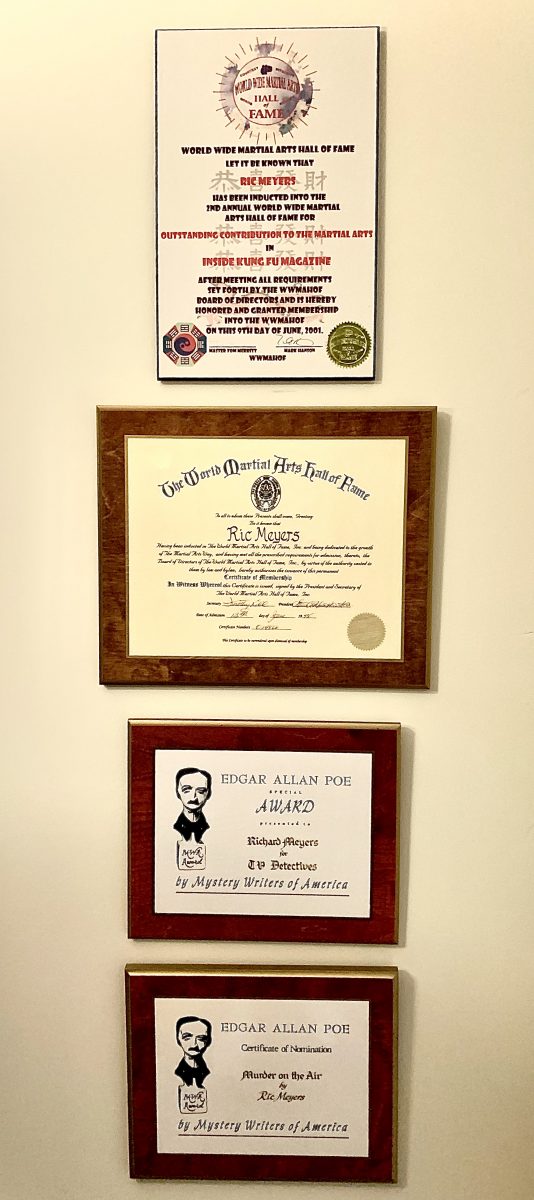
Q: Jeff Rovin helped expand your network that in turn helped create your ability to showcase your creativity to the world at large. Share this story with us.
A: For blessed reasons of his own, Jeff gave an inexperienced 20 year-old the chance to frolic in the comic book playground, then remained a mentor and friend throughout the decades, bringing me into many other projects. My goal has always been to be worthy of that trust and loyalty.
Q: I ask this as a lead to another question. For other creative people out there, people often are too shy, too overconfident, too awkward to properly communicate ideas. Well, these days, many people are that way just in communicating. What is your advice for others in that regard? To expand your network, pitching ideas, or just plain socializing?
A: I’ve found that many gate keepers tire of job seekers’ “limited knowledge.” I treat everything the way I treat any project. I research first. I try to walk at least a mile in my possible boss’s shoes, and become familiar with their needs. I never say “what can you do for me?” I always say “what can I do for you?” And, if I’m told what I can do for them, I want to be ready to do that very well. But if I think I can’t happily satisfy those needs I don’t bother. One of the reasons I’ve done so many different things is that I find everything interesting, and only go after what I think I can do well for people who might appreciate it.
I learned very quickly not to defend my own work. If it’s not on the page, there’s nothing I can say to put it there. When I handed in my first Destroyer novel, Warren said (and once again I quote) “the difference between you and me, kid, is that I know the names of the problems.” I fell to my knees and kissed his feet. “Tell me,” I begged. “Tell me the names of the problems!” I knew something was wrong with my book, I just didn’t know what. Warren told me what. And I learned from that. Soon I learned that all of life was not about “win or lose.” It was about “learn or not learn.”
Unlike many I’ve met then and since, I don’t just want approval, I want to improve. I see every accomplishment as a step up, and I only get to keep stepping up if my work is worthy. So I treasure those who know the names of the problems and are willing to share them with me. I always smile at reality TV contestants who say “I’m not here to make friends.” From my experience, that’s the one thing you should do (and be a worthy friend in return)!
Q: You are a man who wears many hats! From comics, ghostwriting, prose writing, editing, being a king. It’s quite the list. I do a lot myself. Write, graphic design, music, citizen science, journalism, promote concerts, and more. I used to own retail stores as well. I discovered when being covered by the media that it was very difficult for the traditional media to cover such a list of activities. I was told everything that was below the headline had to support the headline. This is a curious statement. What, as a man who has a lot of different things going on, are your thoughts on this? Do you categorize your public statements on your activities based on the specifics of what you are doing?
A: More of my mantras. It’s not what you do, it’s who you are. Strive to be someone, not something. Where do I live? Inside my temporary body. What do I do for a living? I live for a living. As a writer, I know the end of the chapter. We all know how this chapter ends. Monetary success? It’s something humans invented to distract them from admitting the end of the chapter.
Know who George Arliss was? At one time he was the king of all media. Did his movie and stage success make him any better or worse than the gardener who let me walk in front of his car after a long hard day? Not my call. Ultimately all humans have to actually do is eat something, drink some water, and take some shelter. That’s it. But even that doesn’t change the end of the chapter.
So why do anything? Why not? It can be fun. When I do nice things, it makes me feel good. When I do stupid things, it makes me feel bad. I prefer feeling good and have made a life-long study of what actually accomplishes that for me. Listening to Jesus and Santa works for me. Do unto others as you would have them do unto you, and be nice.
Q: In regards to writing, where did the interest come from that got you interested in writing?
A: I was an actor first, but I ultimately found that unrewarding. Actors are rarely in control. I like being in control of my own life, and have found that writing does that for me. My dad once suggested that I live like the writer, director, star, and audience of my own life. I find that most enjoyable, despite spending too much time scoffing at the stupid lead player.
Q: How influential were pulps to you? From Targitt to ghosting Destroyer, to your kung fu related material, there is a lot of pulp-like vibe going on.
A: I discovered the collected stories of Sherlock Holmes when I was five years old. Because of a difficult childhood, I read every mystery and science fiction book published between 1960 and 1975 to find justice, order, escape, and wonder inside my brain. I didn’t actually read pulps until Doc Savage, The Shadow, and The Spider were later published in paperback. I enjoyed and admired them, but not as much as A. Conan Doyle, Agatha Christie, Ellery Queen, Erle Stanley Gardner, Dashiell Hammett, Raymond Chandler, Isaac Asimov, Arthur C. Clarke, Robert Heinlein, and their peers.
Ironically, however, I don’t aspire to them. I write mostly to entertain myself. I know writers who use it as a whip to beat themselves. I use it as a feather to tickle myself. Getting a good idea (which I’m happy to report I did a bunch of times on Targitt) is better for me than any drink or drug.
Q: Do you have a system, creatively, to keep track and on top of everything you’re doing?
A: Nope. I like deadlines, and have gotten okay at keeping them. But luckily, so far, I have carved out a schedule filled with things I really like to do. Little better than waking up looking forward to what I choose to do each day. Don’t know how long that will last, but so far so good. Let’s see … eat, drink water, take shelter, right?
Q: As a creator, you have done a ton of projects. An amazing amount. Many based on ideas, impulses, and passions that you have, and you can convey these and get companies excited to make them a reality. For example, your first book on kung fu was on Jackie Chan. How does a creator go out and get that kind of attention and make things like that happen?
A: No, my first book on kung fu was Martial Arts Movies: From Bruce Lee to the Ninja (the publisher insisted on including “ninja” in the title). It turned out to be super simple. I had just gotten back from seeing the 1978 premiere of the Christopher Reeve Superman movie, and was complaining in Atlas vet Larry Hama’s Marvel Comics office: “when will Hollywood start taking superheroes seriously?”
He said “follow me,” and took me down to the Bleeker Street Cinema where Baby Cart in the Land of Demons (still my favorite samurai movie) was playing. I was thunderstruck, but Larry (famed for The ‘Nam and G.I. Joe comics) said “we’re not done,” and took me down to the Canal Street Cinema where Jackie Chan’s Drunken Master (aka Drunken Monkey in a Tiger’s Eye) was playing. I was like a Tex Avery cartoon character after that — my eyes bulging, my head exploding.
The next day I went to the publisher who had put out my The Great Science Fiction Films book and said “I want to do a book on these movies!” They basically said, “Here’s $750. Go ahead.” So I did, with enthusiasm. Luckily for me, the timing was perfect. A syndicated TV film company and home video company were both trying to educate Americans about these flicks, and all but kissed my feet to help me make it happen.
Four books, countless magazine articles, more than 300 DVDs, two documentaries, a half dozen TV shows on two different channels, and 23 San Diego Comic-Con Kung Fu Extravaganzas later (among other things), here we are.
LET’S TALK KUNG FU!
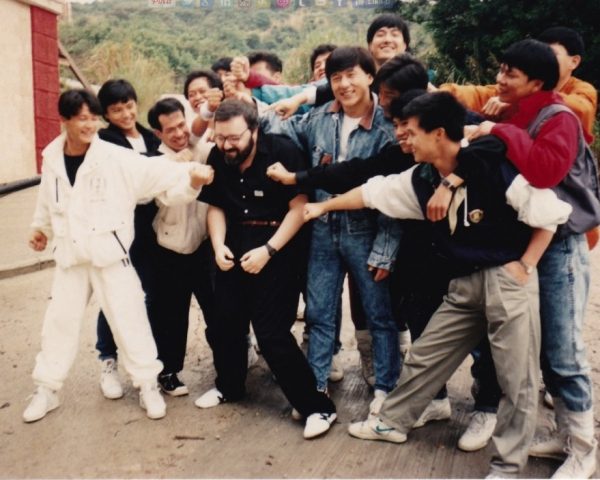
Q: The previously mentioned book on Jackie Chan started your career in kung fu related material.
A: Jackie Chan and peers, yessir. But a couple of years later I realized I was like a writer who knew nothing about baseball writing a book about baseball movies. I decided to truly do a worthy job, I had to understand kung fu. That was easier said than done, because at that time most had a limited knowledge of kung fu. They still do.
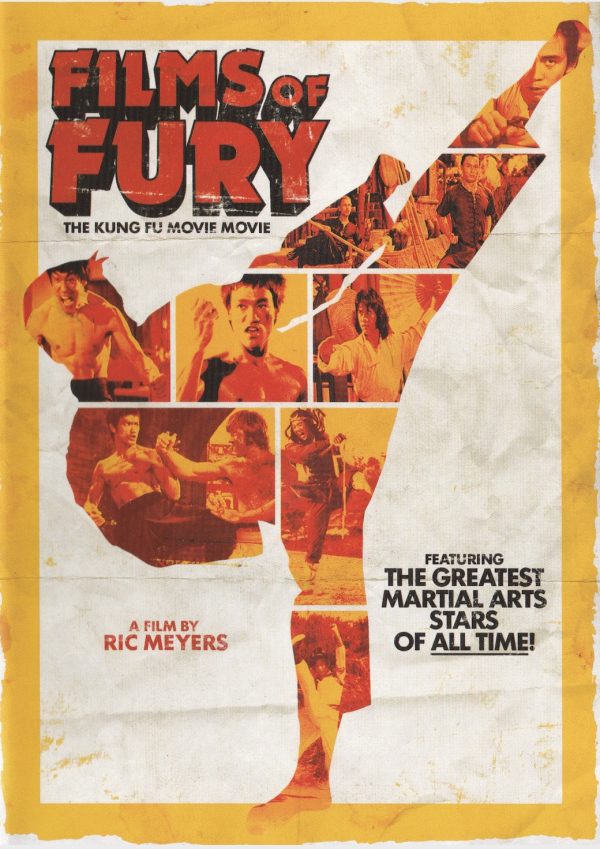
Kung fu teachers were not to be found in America. Martial Arts teachers, oh sure. People who said they were kung fu teachers, you bet. But none of them taught what I saw in Liu Chia-liang’s movies (the greatest kung fu filmmaker). All of them taught how to hurt and be hurt. All of them taught muscles, fists, and anger.
I had already subscribed to the late Bruce Lee’s teachings. “Learn everything you can from everyone, and everything, you can, then make it your own.” But most teachers I met didn’t teach that. They taught “let’s all copy 1972 Bruce’s movies.” I had already started to develop the personal style I now call “Don’t Hurt Me,” or “Don’t Hurt Yourself,” but I couldn’t find anyone to really help me, despite taking judo, karate, jiu jitsu, and what they called kung fu lessons.
So I studied, rather than practiced, martial arts until Inside Kung-Fu magazine sent me to Taiwan in 2001. There I finally met a bunch of incredible, even astonishing, teachers who were teaching chi (inner energy) and love-based self-improvement (hilariously I discovered that love is literally the most powerful thing in the world). I also discovered that “kung fu” could be translated as “human achievement,” not martial arts (martial arts is translated as wushu).
They helped me accept that I couldn’t read anyone else’s mind but my own, and that all human achievement is the human body, the human mind, and the world around it. The rest is money and ego.
In terms of self-defense, however, I always start my lessons by saying “I’m not interested in how tough you think you are, I’m interested in how smart you are. I’m not interested in how bad-ass you want to be, I’m interested in how effective you can be (and really, shouldn’t you be striving to be good ass?).”
Jet Li once told me “a kung fu student’s only true opponent is him or her self.” He’s right. True kung fu is constructive, not destructive, and regenerative, not degenerative. Kung fu is best against germs and stress. And the highest form of kung fu is not to fight — to make your enemy your friend.
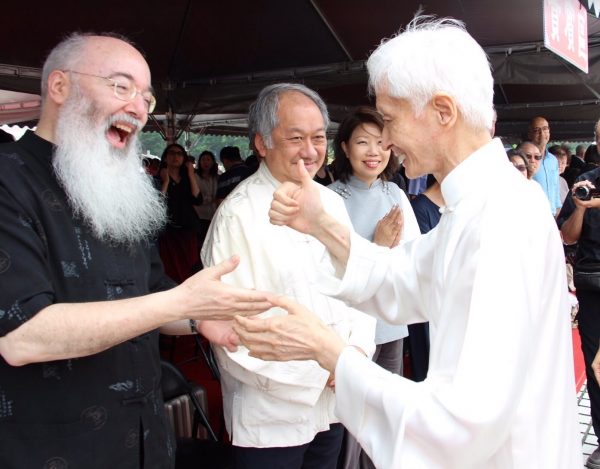
TOUGH GUYS
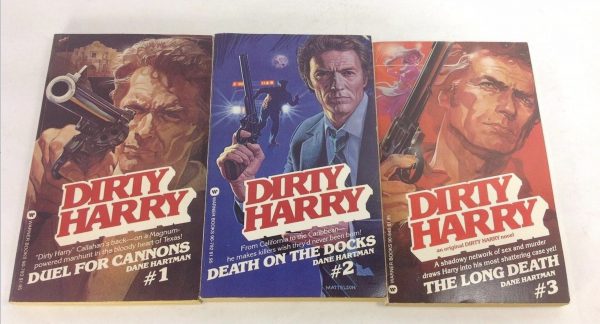
Q: Your career is an amazing run through a multi-media and multi-genre prism. One of the common threads that we find in your story is the story of the tough guy. Targitt, Remo, Dirty Harry, and others would be included in this tapestry of yours. What tough guys influenced you? What recent new tough-guy character has excited you? Who, out of Targitt, Reno, and Dirty Harry, is tougher? What real-life tough guy have you met?
A: I have a term for movies filled with guys (and girls) who act tough. I call them “city of assholes movies.” Warren Murphy (and his co-writer Richard Sapir) created The Destroyer as a satire of other male adventure book series. Dirty Harry never spoke above a whisper. Targitt gave a guy a nose job with a Magnum bullet, sure, but I had a lot of suppressed rage back in ’74. Today’s Targitt, although still set in ’74, is a much smarter and more effective fellow I hope.
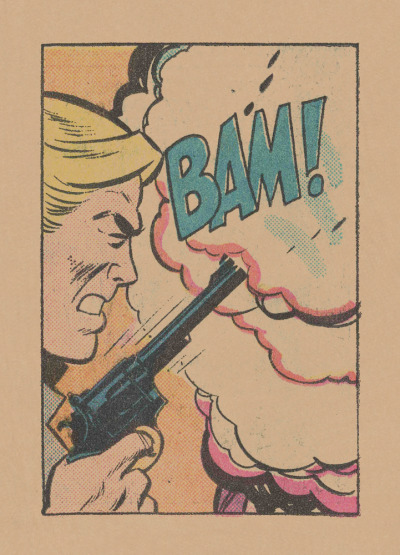
My childhood idols were Sherlock Holmes and James Bond. I thought of neither as tough. I thought of them as (can you guess?) smart. I’ve always admired the brains, not the brawn. True, elevated kung fu has taught me that the brains are the brawn. The smart guy doesn’t stand there and take the punch. That’s just masochistic (not to mention stupid). The smart guy, like Kung Fu Panda (which I consulted on) avoids the punch, then takes the negative, aggressive energy of the opponent and returns it to them.
Bruce Lee’s teaching effected me, but not his movies. Liu Chia-Liang said that Bruce, in his movies, liked receiving and giving out pain too much. I gravitated toward Spider-Man and Jackie Chan, who were constantly trying to avoid pain and fights, and had the open-minded flexibility to figure out ways to succeed with the least amount of self-destruction. This is also true of the tv detective characters I most admire: Joe Friday, Kojak, Hercule Poirot, and, of course, Columbo (who doesn’t even carry a gun and has never thrown a punch).
Probably my favorite fictional character at the moment (besides Targitt) is Rick of Rick & Morty. Incredibly flawed, but staggeringly smart, and one hell of a fighter (Pickle Rick anyone?). As for the “toughest” amongst my three stooges? Unfortunately, Targitt and Harry are still too gun-dependent (that may change in one case). But Remo is Shiva the Destroyer, Shatterer of Worlds, and the sun source of all martial arts. “That’s the biz, sweetheart,” is his tag line. But hopefully all three are too smart and effective (and not dumb enough) to fight each other.
Yes, I’ve met many people who I consider heroic in many walks of life. But I’m fairly certain that none of them would ever consider, or call, themselves “tough.” There’s a saying in the kung fu world. “How do you know when someone is not a kung fu master? When they say they’re a kung fu master.” Same is true, by the way, of ninja.
Thank you Ric! This interview covers only a fraction of what it could be! For people who want to explore the length and breadth of Rics career:
https://www.facebook.com/ricstoryco/
https://en.wikipedia.org/wiki/Ric_Meyers
For those who know Ric through his very well known San Diego Comic-Con Superhero Kung Fu Extravanganza, you might think due to the pandemic the show isn’t going on. Never fear, the internet is here to save the day. Ric is going to do live on Thursday, July 23rd on youtube. Featuring Ric with special guest stars and more!

